We all love a beautiful view and if you capture one on camera you can admire it forever. But how do you take a great photo of a landscape? Photojournalist Alfredo Falvo, owner of Tuscany Photography Day, helps people get the best out of their cameras. Here he shares six stunning images of landscapes that he shot in the Val d’Orcia and reveals how and why he created these scenes.
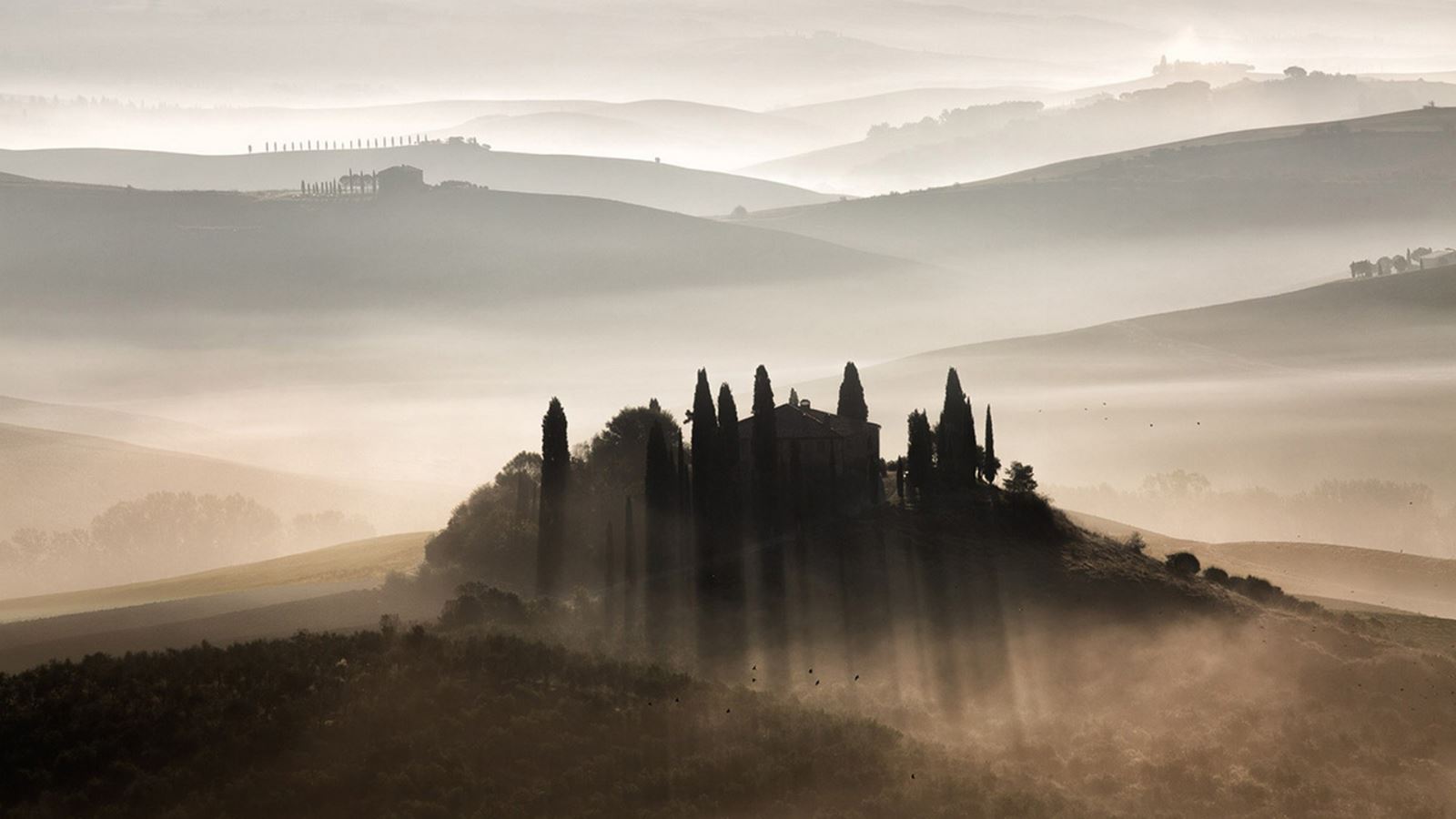
The subject: Belvedere, an agriturismo set on a hill near San Quirico d’Orcia.
The location: At the edge of San Quirico, on the road to Pienza, just past Ristorante La Taverna Del Barbarossa, there’s a field of olive trees on the right, from where the view can be seen looking east.
The shot: I took this photo just after dawn to capture the morning mist. The rising mist cast the building in silhouette and revealed all the layers in the landscape behind.
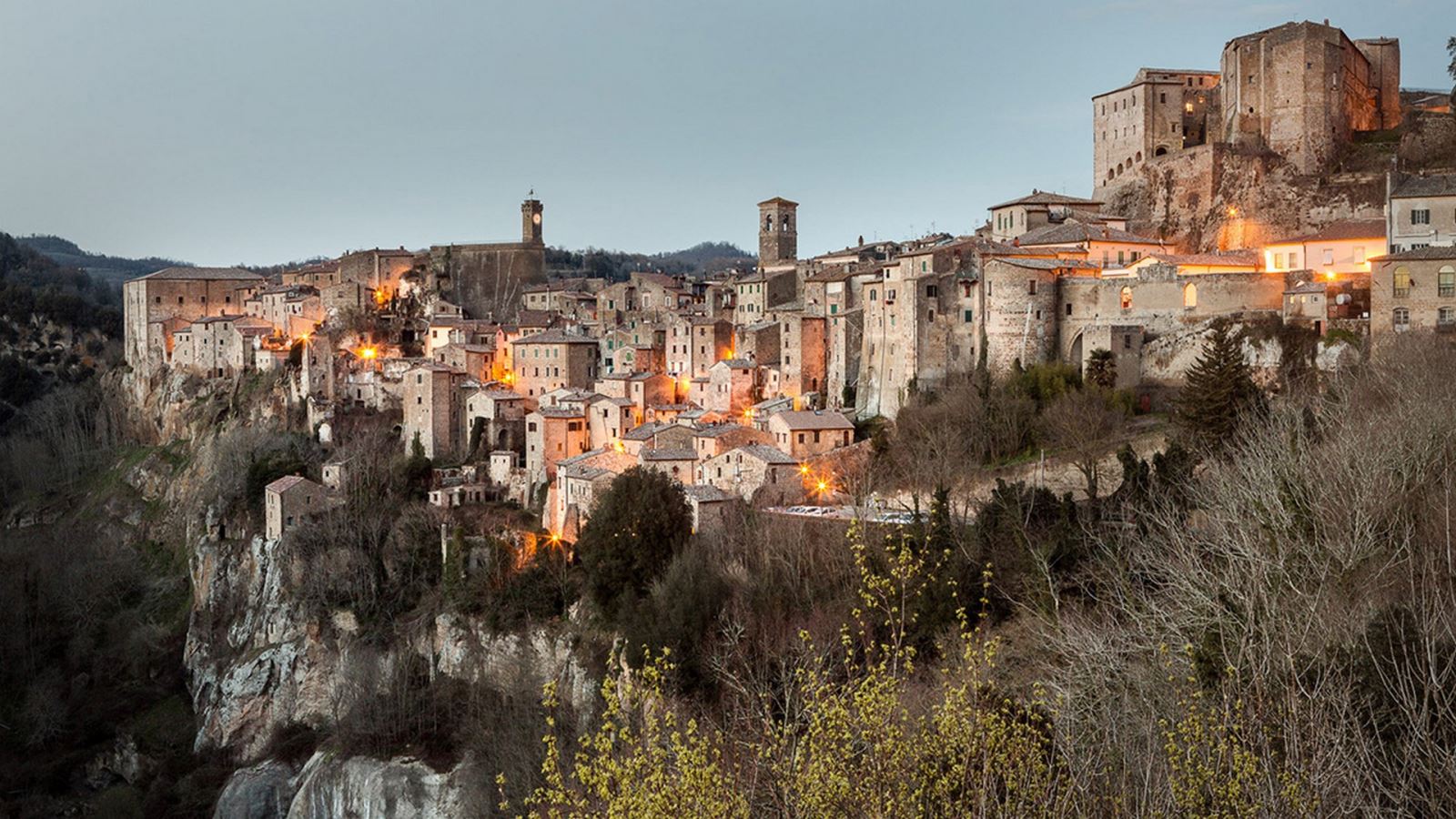
The subject: Sorano, a town between Mount Amiata and the coast.
The location: At the sign that marks the edge of Sorano, on the road to Sovana, this scene unfolds.
The shot: This image was taken during the “blue hour”, just after sunset, when the sun has set but the sky is still blue. Consequently, the natural and artificial lights are well-balanced, even and soft, and the photo picks out a lot of detail.
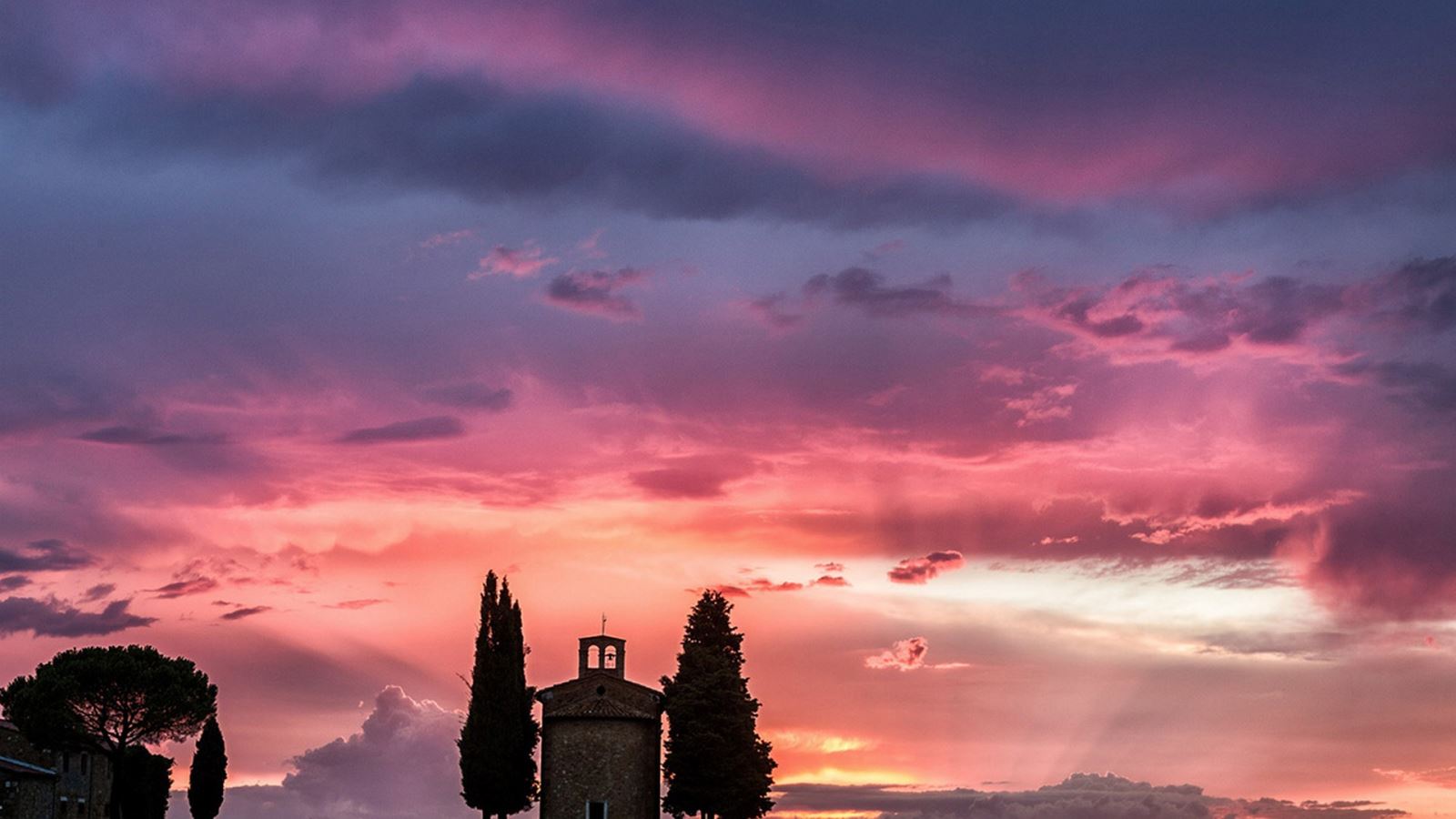
The subject: Cappella di Vitaleta, a rural chapel between San Quirico and Pienza.
The location: About 5km outside San Quirico on the SP146, turn right at the sign to Cappella di Vitaleta. Continue for a couple of kilometres, then take the first right and continue for 500 metres to find the chapel on the right.
The shot: It’s best to photograph this chapel from the front before the sunset. But my shot shows the rear of the chapel in silhouette. I was lucky weather-wise; the sun had dipped below the horizon but the rays of light gave the clouds these amazing colours.
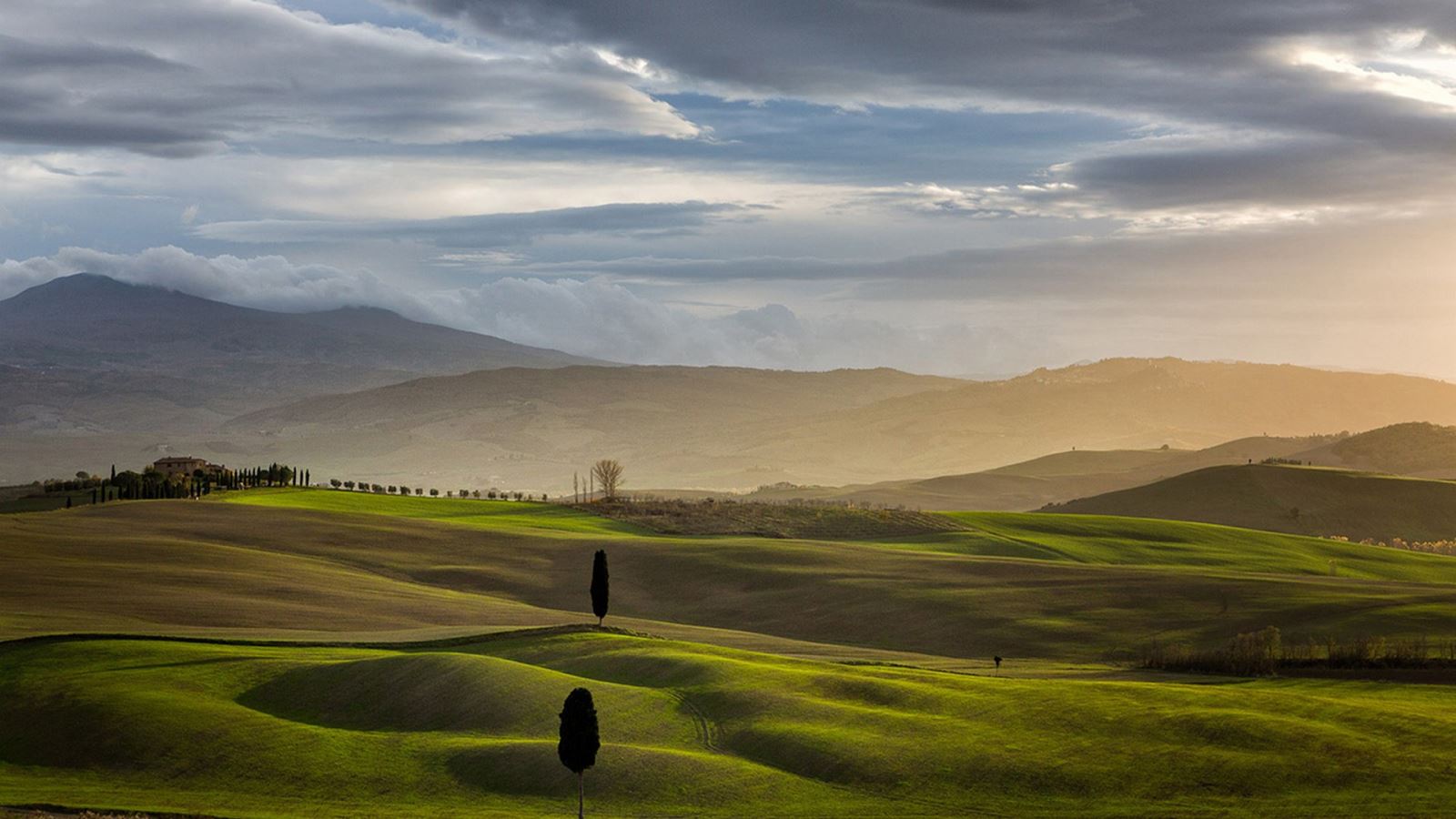
The subject: The famous landscape seen in the film Gladiator, where Russell Crowe dreams of returning home as he dies.
The location: Standing with your back to the entrance of Le Pieve di Corsignano, just off the SP18 near Pienza, turn left onto a gravel track and walk for about 200 metres, just before the road levels out, then turn right onto a steep path into a field to see this view towards a little house on the hill with Mount Amiata in the background.
The shot: This image is all about the light, which gives the hills their shape. A golden light was coming in from the right, reminiscent of the scene in the film, and the trees add symmetry to the photo.
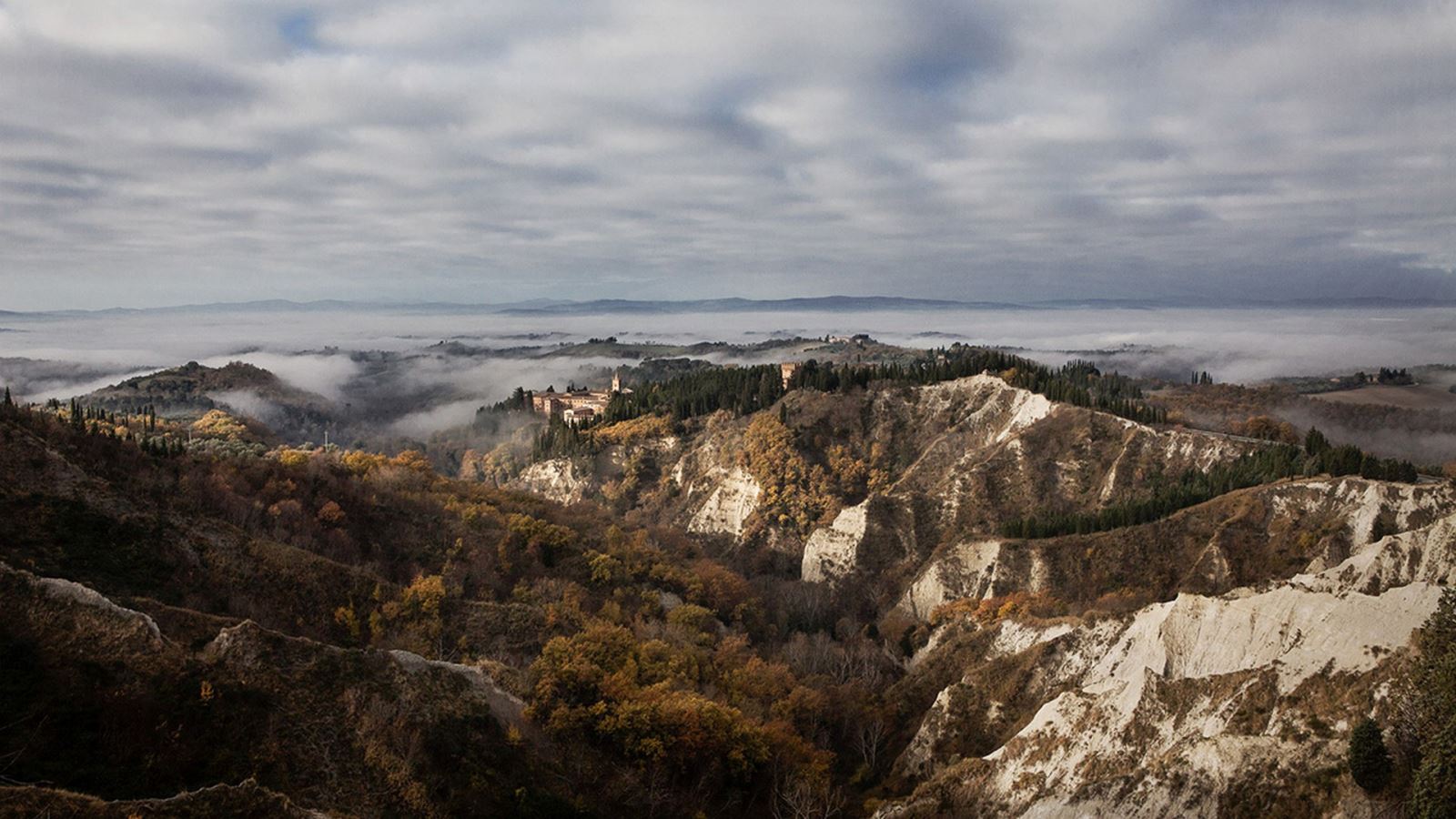
The subject: Monte Oliveto, an abbey near Asciano.
The location: Just before the Santuario Madonna delle Grazie chapel, as you enter Chiusure from the SP451 along the Strada Provinciale del Pecorile, look to the west.
The shot: I took this shot about an hour after sunrise to capture the diffuse light on the rock formations, using their shape to draw the eye towards the abbey. I like the contrast between the sharp angular lines of the rocks and the soft, billowing clouds.
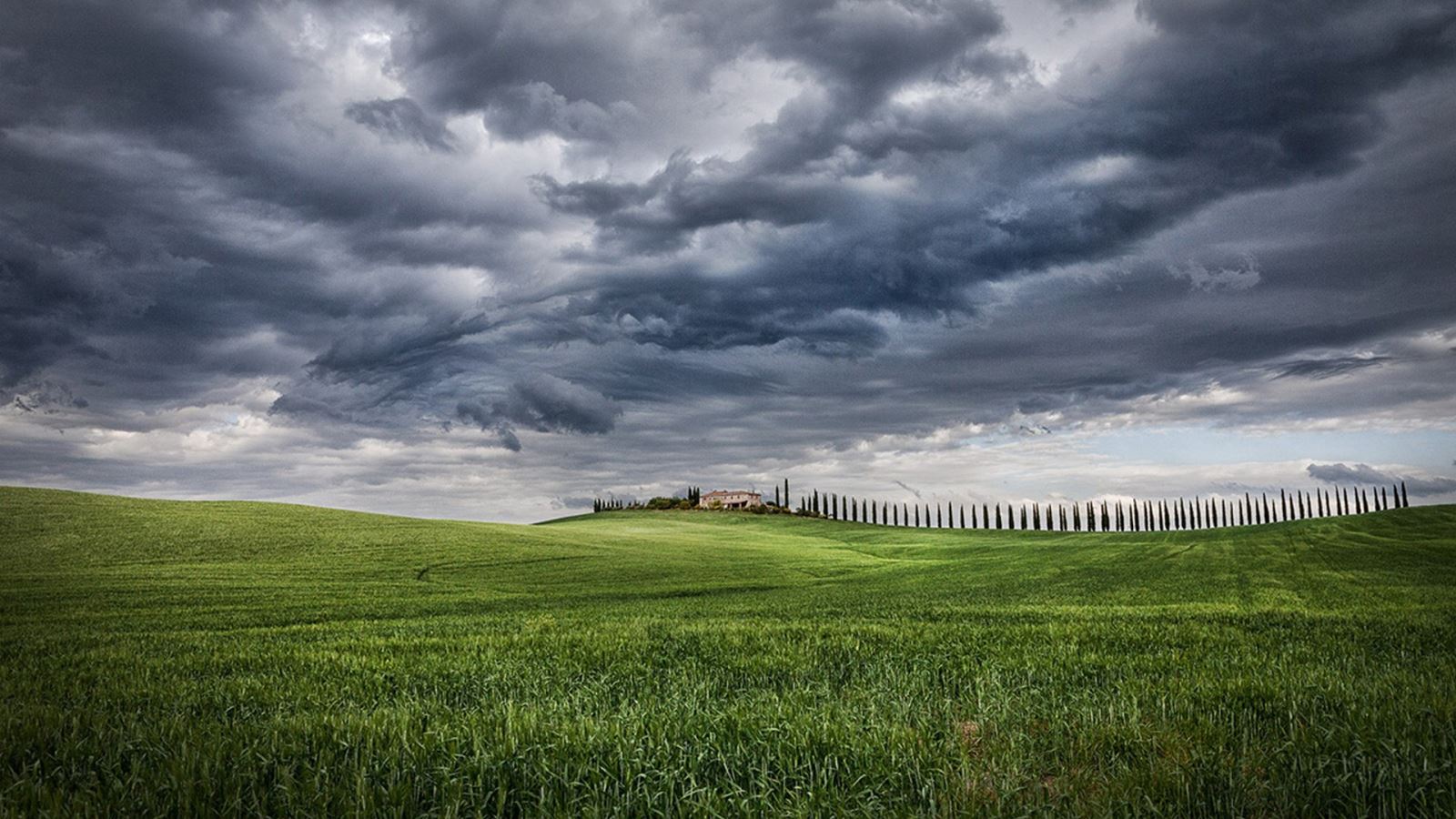
The subject: Poggio Covilli, an agriturismo near Bagno Vignoni.
The location: Take the SR2 from Bagno Vignoni towards Gallina. After about 2km you will see the cypress trees in the image on the left. This photo was taken at a bend in the road about 150m before the driveway to the agriturismo.
The shot: I wouldn’t usually recommend shooting before the “blue hour”, but that’s when this photo was taken. I was struck by the stormy sky, so I waited (a long time) for the light to fall on the top of the hill and make the house brighter than the rest of the landscape.
Alfredo’s Top 3 Tips: taking landscape photos
-
Never take a photo with the sun behind you – even though that’s what we’re taught to do. Make sure the sun is to one side, to give light and shade to the subject and the rest of the elements of the image. This will add dimension to your picture.
-
The best time to take photos is in the morning before the sun rises but the sky is light, about a half-hour before to an hour after sunrise. Alternatively, take photos from 90 minutes before to 40 minutes after sunset. The “blue hour” is just after sunset. If you take photos outside these times, they’ll make good memories but not great photos.
-
Always keep the image as simple as possible. Draw the eye straight to the subject and let the light help direct the eye towards the subject, too. Less is more.
Tuscany Photography Day (www.tuscanyphotographyday.com) offers daily workshops, led by Alfredo, from €115 per person.














